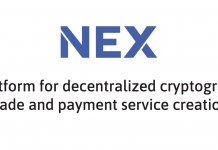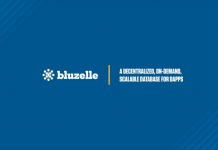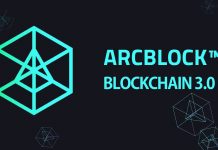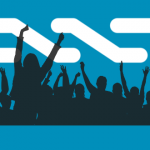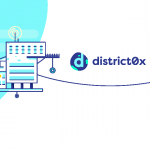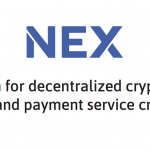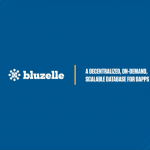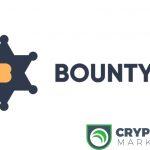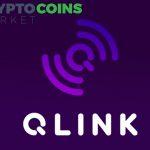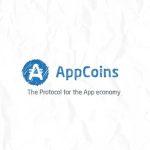PROJECT OVERVIEW.
ICO date: 25th October.
Mercury Protocol is a new type of software designed for messaging apps. The protocol will bring the security, privacy, and trustless benefits of blockchain technology to everything from one-to-one private conversations, to publicly viewable announcements, to group discussions.
Mercury Protocol isn’t designed to replace traditional messaging software and social networks – like Facebook and WhatsApp. Instead, it’s designed to complement their services. The goal is that messengers like Signal, WhatsApp, and Facebook Messenger will eventually adopt the Mercury Protocol.
In the near-term, however, the company will implement the Mercury Protocol onto its two apps, Dust and Broadcast, before the end of the year. Dust is an alternative to Twitter, it provides a more secure, less troll-like form of messaging and group discussions. Broadcast is not available yet, but reportedly involves letting people pay to engage in discussions with luminaries like Mark Cuban.
Any communication platform that integrates the Mercury Protocol will be able to exchange messages and content across an application agnostic blockchain, increase user privacy by disassociating their identities from their behavioral data, provide stronger network security than any private system that has a single point of failure, and leverage tokens to encourage positive user participation.
BACKGROUND.
Problem with centralized systems and soultions from Mercury Protocol:
- Application owns and controls user data. With Mercury Protocol all content is ownerless. Depending on the type of content being stored, some of data will reside on the blockchain, and some will reside off the blockchain, either in a decentralized storage solution (e.g. IPFS or Swarm) or offline via Oracles.
- Network effects encourage monopolies. Mercury protocol creates shared user network. Any communications application can integrate with the protocol.
- Walled gardens are the norm. With Mercury protocol any application can send authenticated messages, transactions or content to any other application on the protocol, securely and seamlessly.
- Quality of community undermined by scalability. With the Mercury Protocol, every user has a reputation score that serves as metric of network participation quality. “Bad” users are disincentivized from participating in the platform.
- Business model based on the monetization of user data. Mercury Protocol has a built-in token system that applications can use to incentivize users to participate in their platforms and build meaningful services that users are willing to spend tokens on.
HOW IT WORKS.
Mercury Protocol, like many other blockchain platforms, revolves around the blockchain’s ability to generate tokens. Mercury Protocol is built on top of the Ethereum blockchain. Under the Mercury Protocol, users will be able to earn tokens in exchange for reading a certain number of articles. Users can also gain tokens through positive contributions to discussion groups.
One of the key goals of the Mercury Protocol is to combat trolls. You can see how this would work: if people have to earn tokens through constructive behavior, then it discourages trolls and scammers. On today’s social networks, it costs nothing to harass people all day long.
When the Mercury Protocol launches on Dust, the only way for people to earn tokens will be through participation. In the future, however, users will have the opportunity to purchase tokens.
Another key goal of the Mercury Protocol is to implement better privacy. This privacy comes from the blockchain’s ability to let people sign on without turning over personal information. Nothing on the blockchain is associated with someone’s real identity. Your blockchain “profile” isn’t tied to personal information.
As the Mercury Protocol folks explain:
While all transactions on the blockchain are public, users are protected through pseudonymity because nothing on the blockchain associates their real identity with their Ethereum account. This means it’s possible to still perform large scale analysis of transactions on the Mercury Protocol network while significantly reducing the risk of compromising any user’s specific activity history. This contrasts with the current industry norm of aggregating and selling user behavioral data to advertisers, directly tying their identities to their activities.
The end result of the Mercury Protocol, if the project is successful, is to create an internet that rewards positive, constructive behavior, where users’ privacy is better protected, and where modern communication tools aren’t driven by marketing and advertising revenue. That’s why people are getting excited about the Mercury Protocol.
USE CASES.
1-to-1: Conversations:
- Cross platform messaging + content.
- Encrypt messages.
- Large file size.
- Extend lifetime of a message.
1-to-Many: Announcements:
- Increase reach by boosting distribution.
- Send content to a targeted demographic.
- Premium interactions (e.g., special likes or comments).
Many-to-Many: Discussions:
- Decrease queue time to send a message.
- Premium message types (Add visual flair, inline polls, etc.).
- Community-driven moderation.
GMT TOKEN USES.
Users can earn GMT by performing various platform-specific incentivized actions. For example, if a platform wants to encourage the consuming of content, and a user reads X number of posts, she might be rewarded for her time by receiving GMT.
They can also gain them by positive contributions to discussion groups—earning them a reputational credit score of sorts. This reputation score can be leveraged to encourage positive activity and discourage negative activity by increasing or decreasing GMT cost of services based on a user’s reputation. Similar to a credit score or insurance claim history, users with weaker reputation score may be charged higher premiums while users with a stronger reputation will be charged a lower premium.
Users can then spend earned tokens on premium services on any platform that’s integrated with the Mercury Protocol. As the number of Mercury Protocol-linked services grows, the more incentives users will have to gain tokens.
ROADMAP.
Q4 2017:
- Complete oracle implementation.
- Decentralized governance launch.
- Release Broadcast to the market.
Q1 2018:
- Complete state channel implementation.
- Open-source Mercury Protocol.
- Mercury Protocol hackathon.
HOW ADVANCED IS IT?
The company has a messaging app, Dust, since 2014. Dust is basically a more secure, less scam-filled version of Twitter or Facebook Messenger. Dust uses an encrypted, all in memory storage system that makes user data “forensically-unrecoverable” once it’s been deleted. Users can say anything through the messaging app without the fear of prying eyes.
The app averages over 20,000 daily active users and 200,000 messages sent per day. However, the app is in decline with respect to number of users.
SIMILAR PROJECTS.
Status.
Status (SNT) is their main competitor in the decentralized space, with the Market Cap of about $90M. Status app which is currently in its alpha version and is being heavily developed will offer dApps, payments sending and cryptocurrency storing features. Mercury Protocol offers none of these.
Bitmessage.
Bitmessage basically forms a ring of all clients, who forward the traffic. That way it’s very difficult to do traffic analysis since you can’t tell who received the message. However, Bitmessage does not use a blockchain, since messages are not stored, except optionally by the recipient, after transmission.
The other decentralized competitor is Obsidian (ODN). Obsidian Platform, found online at ObsidianPlatform.com, is a blockchain technology platform. The platform’s first two offerings include a highly secure, anonymous messenger as well as a cryptocurrency. In the future, the developers plan to continue building applications on the platform to grow their ecosystem.
The Obsidian Platform itself is a C# blockchain based on Stratis, using both Masternodes and Service Nodes. The core feature of the blockchain is the Obsidian Secure Messenger, or OSM. As of August 2017, the messenger app was in public alpha testing.
ODN raised only $1.5M during its ICO, and is now trading at $7M market cap. The Mercury Protocol is trying to raise 3 times that much.
Signal.
Signal is widely considered the gold standard of secure encrypted messaging apps. While Dust has 100,000 installations, the Signal app has over 5 million installations. Signal have built a protocol as well which is already integrated into the following name brands: Facebook Messenger, Google Allo, and WhatsApp.
HOW IS IT DIFFERENT FROM OTHER PROJECTS IN THE SPACE?
The advantage that Mercury has here is their Dust application, as they will be able to leverage those users into active participants of the network.
USER REVIEWS.
“I read the paper. Still not sure how this solves anything besides transferring wealth from the gullible to the authors:
* Noted are the transactions-per-second limits, but solution is missing behind some hand waving
* Lots of talk of fees for doing things like sending messages and lots of mentions of “premium” offerings. This is not a free messaging app (which means likely nobody will use it and the network effect will not happen. Will you pay anything over $0.00 to send messages?)
* Talk of incentivization of “reading posts” meaning “there will be ads”
* Literally mentions farming user data “users generating behavioral data for large scale analysis”
* A completely ridiculous claim that pseudonymity == privacy
* No talk at all about actual message encryption (you would not want your 1-to-1 messages publicly readable in the blockchain, would you?)”
“I participated in the ICO and also downloaded Dust. Dust works pretty well. It reminds me of Snapchat but for text as you can make it so once the person reads the text you send it automatically erases(or ‘dusts’).”



